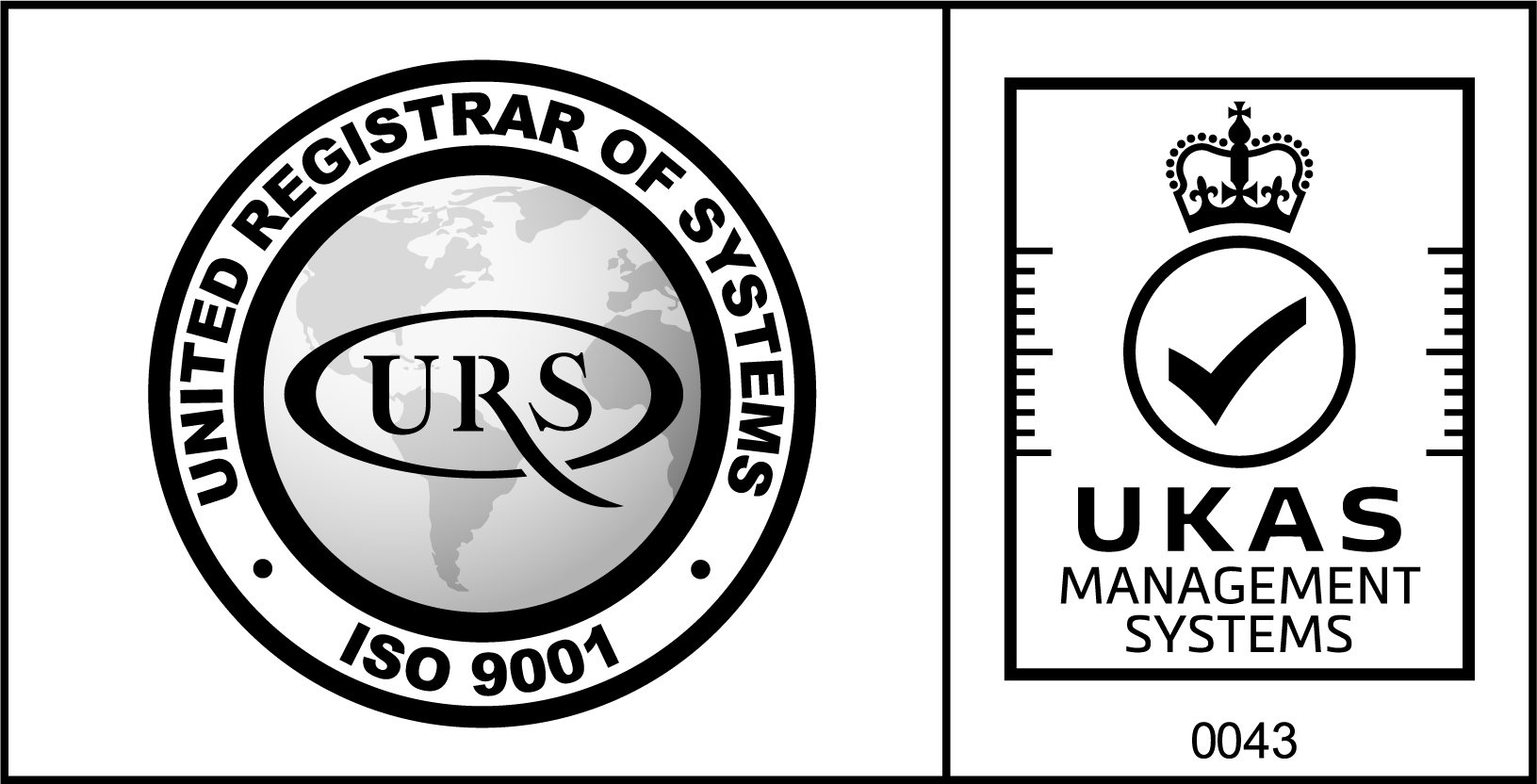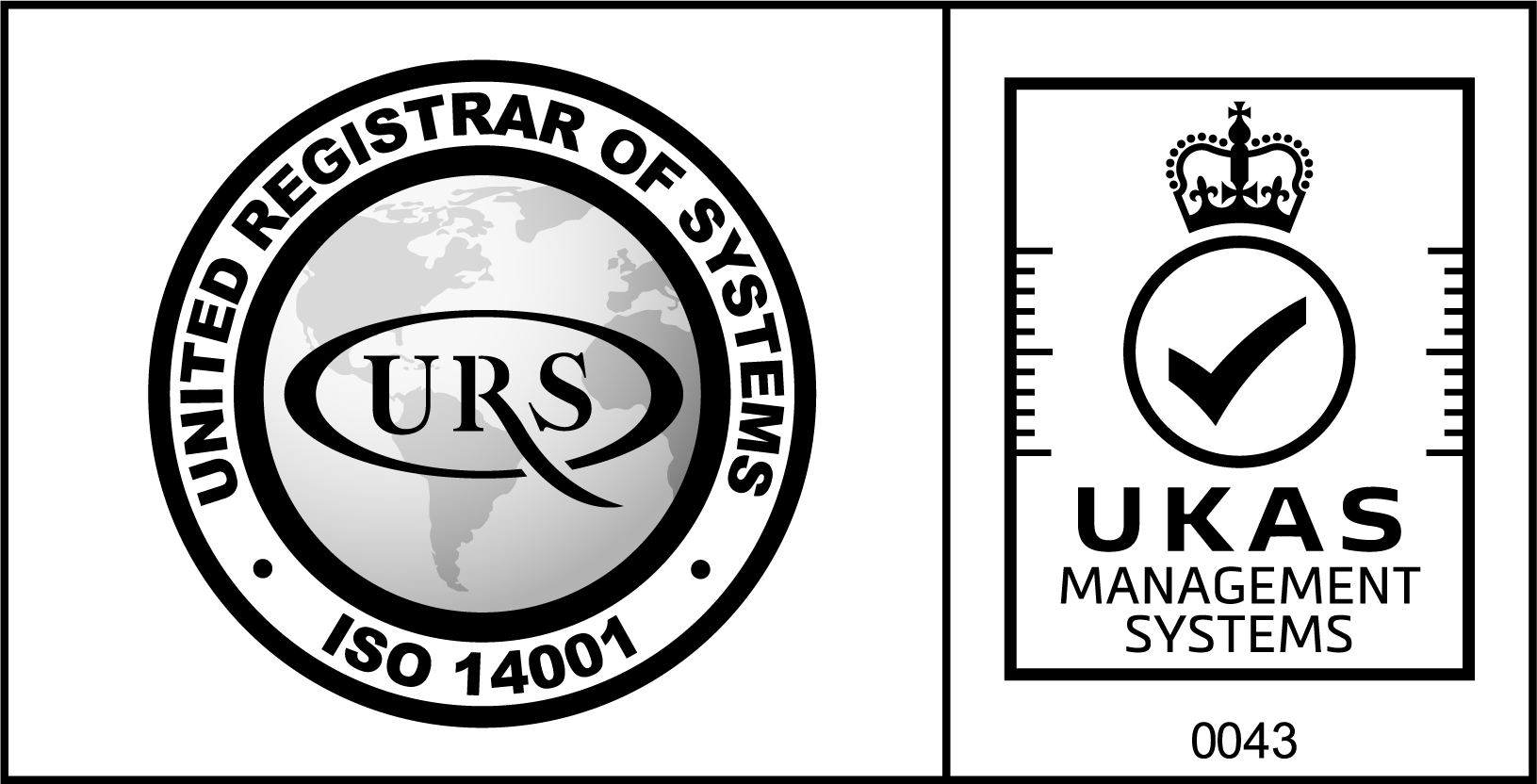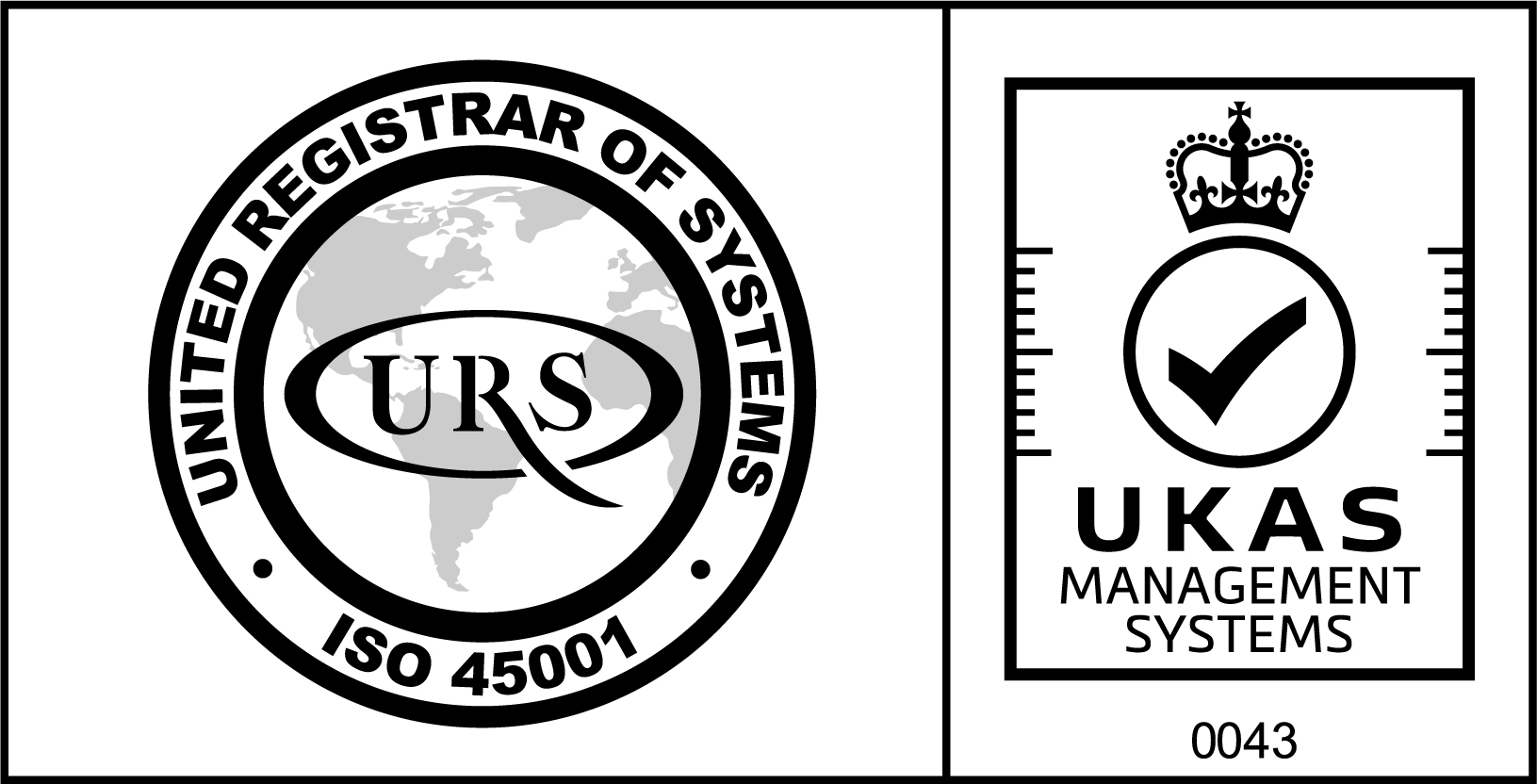What Is the Average Lifespan of UPS Batteries? Introduction to the Principles and Structure of Uninterruptible Power Supply (UPS) Systems
In today’s rapidly evolving digital and AI-driven business environment, the demand for stable power supply continues to grow across data centers, server rooms, medical facilities, and smart offices. Uninterruptible Power Supply (UPS) systems provide reliable power protection for these high-end applications. This article will introduce the operating principles of UPS systems, their structural components and battery lifespan, as well as key maintenance points and purchasing recommendations to help you meet the power challenges of the AI era.
Basic Operating Principles of an Uninterruptible Power Supply (UPS) System
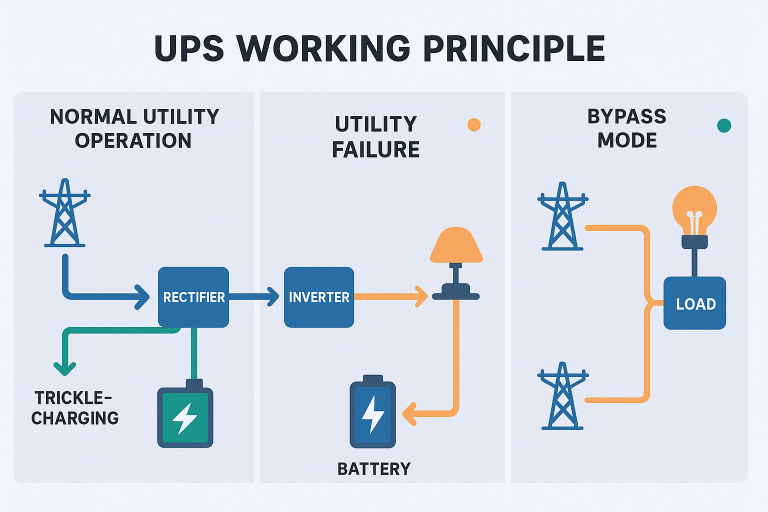
When discussing the principle of an uninterruptible power supply (UPS) system, its core function lies in instantly switching to internally stored battery power when the utility power supply (i.e., the alternating current supplied to residential or commercial users via the public grid) experiences abnormalities or interruptions. This ensures critical equipment continues operating normally, preventing data loss or equipment damage.
During normal utility power supply, the UPS system converts the incoming AC power through a rectifier into DC power. This DC power simultaneously supplies the connected load equipment and charges the internal battery bank. When utility power fails or becomes abnormal, the UPS immediately activates its inverter to convert the stored DC power back into AC power, continuously supplying it to the load. This capability for instantaneous switching is the very essence of how an uninterruptible power supply system operates.
Types of UPS Systems
In addition to providing backup power during outages, UPS systems also feature voltage stabilization and filtering capabilities. They effectively eliminate noise and surges in utility power, enhancing power quality and protecting sensitive electronic equipment from damage. Based on different application requirements, UPS systems can be categorized into the following three main types:
- Off-Line UPS: Supplies power directly from the utility grid during normal operation and only intervenes during power outages. Suitable for general office or personal computer use.
- Online UPS: Utilizes double conversion technology, where the load is always powered by the inverter. Provides the highest level of power protection, particularly suitable for high-end applications such as data centers and medical equipment.\
- Line-Interactive UPS: Continuously monitors utility power quality and features automatic voltage regulation. This reduces frequent battery switching, extending battery life. Suitable for small to medium-sized server rooms or network equipment rooms.
In-Depth Analysis of the Structure of Uninterruptible Power Supply (UPS) Systems
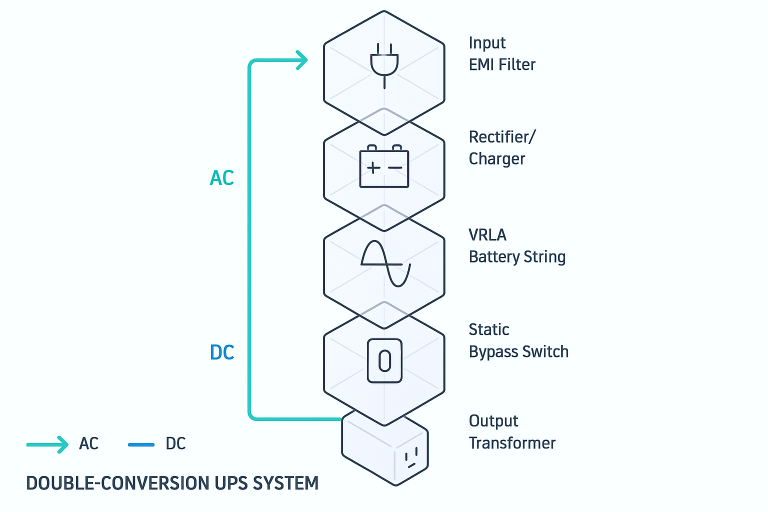
The UPS uninterruptible power supply system features a rigorously designed architecture, primarily comprising core components such as a rectifier, battery bank, inverter, static switch, control circuit, and electronic bypass switch:
| Component | Function Description |
|---|---|
| Rectifier/Charger | Converts AC mains power to DC power, supplying the inverter while simultaneously charging the battery. |
| Storage Battery / Battery Pack Battery/Battery Pack | Stores electrical energy to provide DC power to the inverter during utility power failures, determining the duration of backup operation. |
| Inverter | Convert the battery's DC power into stable AC power to supply the load equipment. |
| Static Switch | Responsible for seamless switching between utility power and UPS inverters to ensure uninterrupted power supply. |
| Control circuit | Monitor overall operational status, manage functions such as charging, discharging, and switching, and ensure system stability. |
| Electronic Bypass Switch | In the event of UPS failure or overload, the load is directly supplied via mains bypass to ensure equipment safety. |
UPS systems increasingly adopt modular designs. This approach allows users to flexibly expand and maintain systems according to business growth needs, helping reduce operational costs. When integrated with intelligent monitoring systems, real-time oversight of UPS operational status, battery health, remaining backup time, and load conditions further enhance management efficiency.
Recommended Battery Lifespan for UPS Systems
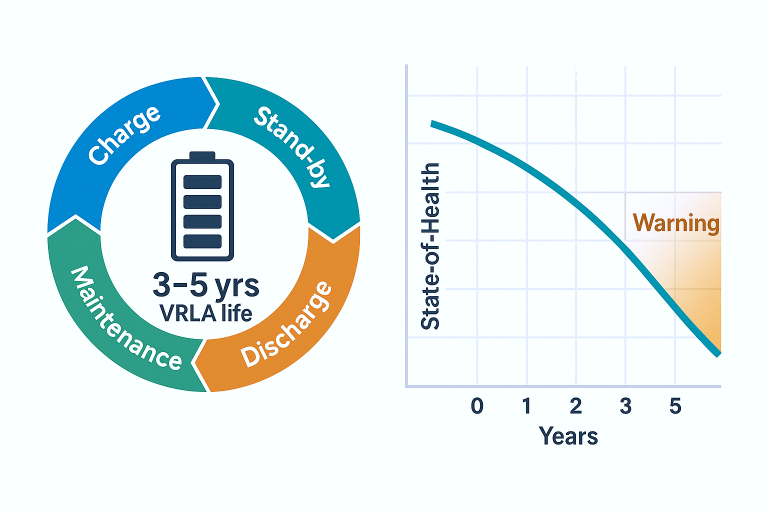
The battery lifespan of an uninterruptible power supply (UPS) system is a critical factor affecting UPS reliability and operational costs. Common lead-acid batteries have a recommended lifespan of approximately 3 to 5 years, while lithium-ion batteries can last over 10 years. Lead-acid batteries are widely used in UPS configurations due to their lower cost and simple maintenance, but they have a relatively short lifespan and are more sensitive to ambient temperature. Lithium-ion batteries offer advantages such as high cycle life, light weight, and compact size. Although more expensive, they are suitable for applications demanding longer backup times and space-constrained environments.
UPS Battery Maintenance and Lifespan Extension Recommendations
In addition to the battery type and design life itself, the lifespan of UPS batteries is influenced by multiple factors, including usage frequency, charging methods, ambient temperature, and maintenance practices:
Avoid unnecessary deep discharges
The more frequently a battery is charged and discharged, the shorter its lifespan in an uninterruptible power supply (UPS) system. It is recommended to avoid unnecessary deep discharges whenever possible and to plan UPS usage scenarios appropriately. This ensures the battery activates its backup function only when necessary, thereby reducing wear and extending its service life.
Avoid Overcharging or Chronic Undercharging
Both overcharging and chronic undercharging can damage battery health. It is essential to configure charging parameters according to the manufacturer’s recommendations, use an appropriate charger, and regularly monitor the charging status. Ensuring stable charge/discharge cycles helps maintain battery performance.
Strictly control ambient temperature
If the UPS is continuously exposed to high temperatures, excessive humidity, or poor ventilation, the battery life of the uninterruptible power supply system will be significantly shortened. It is recommended to install the UPS in a well-ventilated, cool, and dry environment, maintaining temperatures between 15°C and 25°C, and avoiding direct sunlight and heat sources.
Maintenance Management and Regular Inspections
Regularly inspect battery condition and keep the battery and its surroundings clean to prevent dust and moisture accumulation. If you notice a significant reduction in backup time, battery swelling or deformation, or frequent UPS alarms, promptly inspect and consider replacing the battery. Even without obvious abnormalities, proactively replace the UPS battery when it reaches its recommended lifespan to prevent failure during unexpected power outages. Additionally, selecting high-quality batteries and genuine manufacturer accessories, combined with an intelligent monitoring system, enables real-time tracking of battery health status. This facilitates early detection of potential anomalies, further enhancing the reliability of the UPS system.
Application Scenarios for UPS Uninterruptible Power Supply Systems
- Data Centers: Rely on UPS to ensure continuous operation of servers and storage equipment, preventing data loss due to power outages
- Medical Equipment: Critical instruments in operating rooms, intensive care units, and similar settings depend on UPS to prevent interruptions from power failures, safeguarding patient safety
- Automated Industry: UPS prevents sudden power outages from halting production lines or damaging equipment
- Financial Institutions: Utilize UPS to maintain stable operation of trading systems and ATMs
- Smart Buildings & Security Systems: UPS ensures uninterrupted power for CCTV, fire alarm systems, and other critical infrastructure
- AI & High-Performance Computing: As AI technology becomes widespread, UPS supports high-density, high-power loads like AI servers and deep learning platforms, guaranteeing uninterrupted AI processing while maintaining data security and system stability
Future for UPS Systems in the AI Era
With the rapid advancement of technologies such as Artificial Intelligence (AI), Machine Learning (ML), the Internet of Things (IoT), and 5G, the role of Uninterruptible Power Supply (UPS) systems will become increasingly critical. AI servers and related infrastructure demand far greater power than traditional IT equipment, featuring not only high power density but also extremely stringent requirements for power quality and stability.
To address the high volatility and sudden high-load demands characteristic of AI workloads, UPS systems are evolving toward high power density, modularity, and scalable designs. The latest generation of UPS systems enhances dynamic response capabilities and intelligent monitoring functions, enabling real-time output adjustments to ensure uninterrupted AI computing. Currently, many global data centers and AI infrastructures widely adopt UPS systems with single-unit capacities ranging from 1.25MW to 2.5MW. These systems not only occupy minimal floor space but also offer flexible scalability. When integrated with lithium-ion batteries or energy storage technologies, they enhance energy efficiency and backup capabilities.
New Technologies in UPS Uninterruptible Power Supply Systems
As data centers and AI infrastructure demand greater energy efficiency and sustainability, new technologies for uninterruptible power supply (UPS) systems continue to emerge. Solutions such as medium-voltage UPS and grid-interactive UPS effectively help large facilities improve energy utilization, reduce cooling requirements, and lower overall carbon emissions, aligning with global sustainability trends.
Next-generation UPS battery technologies, such as lithium-ion batteries and lithium iron phosphate batteries, are gaining widespread adoption. These innovations significantly extend the operational lifespan of UPS batteries while further enhancing system safety. Combined with intelligent and remote monitoring technologies, the structural management and routine maintenance of UPS systems become more efficient. Predictive maintenance is now achievable, empowering enterprises to proactively safeguard their power supply conditions.
Recommendations for Selecting an Uninterruptible Power Supply (UPS) System
- Assess the total power consumption of all equipment requiring protection, and reserve 20% to 30% capacity as system redundancy.
- Select the appropriate UPS type based on the application scenario, such as standby UPS for offices and online UPS for data centers.
- Choose the suitable battery capacity or expandable battery bank based on the required backup time during power outages.
- Note the differences among brands in structural design, maintenance convenience, and intelligence levels.
- Prioritize products with automatic voltage regulation and intelligent monitoring functions.
- Consult professional engineering teams for recommendations, selecting brands or models that offer maintenance convenience and reliable structural design.
Professional UPS Solutions Safeguarding Your Business Continuity
Whether you’re planning to upgrade your data center, optimize your AI computing platform, or seek more reliable power protection for your enterprise’s critical infrastructure, Newtech can tailor the most suitable UPS uninterruptible power supply solutions for you. With extensive industry experience, a team of professional engineers, and a diverse product portfolio, we deliver comprehensive one-stop services—from system design, installation, and testing to ongoing maintenance—to enhance operational efficiency and power safety. Contact us today and let Newtech be your reliable partner for stable growth.
Frequently Asked Questions
What are the risks of not replacing batteries when their lifespan expires in an uninterruptible power supply (UPS) system?
As batteries age, their energy storage capacity significantly declines. During power outages, the backup runtime provided by the UPS will drastically shorten. In more severe cases, severely aged batteries may fail to activate the inverter for effective power output due to excessively high internal resistance, leading to equipment power loss, data loss, or hardware damage.
How can you determine when a UPS battery has reached the end of its service life?
A noticeable reduction in the UPS’s backup runtime indicates potential battery capacity decline, signaling the need to consider replacement. If abnormal conditions such as battery swelling, leakage, or deformation are observed, immediate replacement is essential to mitigate safety risks. Frequent low-voltage or fault alarms from the UPS typically indicate poor battery health, requiring inspection and possible replacement.
How does the UPS work differ from a voltage regulator?
A UPS not only regulates voltage but also instantly switches to battery power during mains outages, providing uninterrupted electricity. Voltage regulators, however, lack any energy storage or backup power capability. Once mains power is completely lost, the regulator ceases to function.
Why is structural design important when selecting a UPS?
The structural design of a UPS directly impacts system stability, scalability, and future maintenance ease. Well-designed UPS units facilitate installation, upgrades, and expansion. They also enable faster repairs or component replacements during failures, minimizing downtime. Products with high maintenance accessibility significantly reduce labor and maintenance costs while minimizing the impact of unexpected failures on business operations. UPS systems with advanced intelligence offer real-time monitoring, early warning, and remote management capabilities, enabling administrators to better track system status, detect potential issues early, and enhance overall power protection reliability.
Different UPS brands vary in structural design, maintenance convenience, and intelligence levels. These factors directly impact daily management efficiency and long-term operational costs. Pay close attention to these details during selection to ensure the UPS system operates stably and efficiently over the long term.


